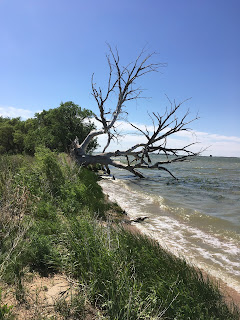Here in central Missouri, we have experienced hot, humid days and warm, sultry nights over the past week, broken only by occasional showers and thunderstorms. Such tropical conditions are ideal for amphibians.
One of these moisture-loving creatures has taken up residence in our magnolia tree, as he has the last few years. His loud trill, at times mimicking the call of a sandhill crane and at other times sounding like a crazed red-bellied woodpecker, has intensified with the oppressive heat and humidity. Small and well camouflaged, he is almost impossible to locate amidst the dense greenery of early summer.
Our noisy neighbor is an eastern gray treefrog. Highly territorial, the male attracts females with his intense trilling, fertilizing eggs that they lay in shallow, ephemeral pools (often within small cavities on the tree). By mid summer the mating frenzy should subside and he'll feast on countless insects before hibernating in loose soil beneath leaf litter or a brush pile.
One of these moisture-loving creatures has taken up residence in our magnolia tree, as he has the last few years. His loud trill, at times mimicking the call of a sandhill crane and at other times sounding like a crazed red-bellied woodpecker, has intensified with the oppressive heat and humidity. Small and well camouflaged, he is almost impossible to locate amidst the dense greenery of early summer.
Our noisy neighbor is an eastern gray treefrog. Highly territorial, the male attracts females with his intense trilling, fertilizing eggs that they lay in shallow, ephemeral pools (often within small cavities on the tree). By mid summer the mating frenzy should subside and he'll feast on countless insects before hibernating in loose soil beneath leaf litter or a brush pile.

